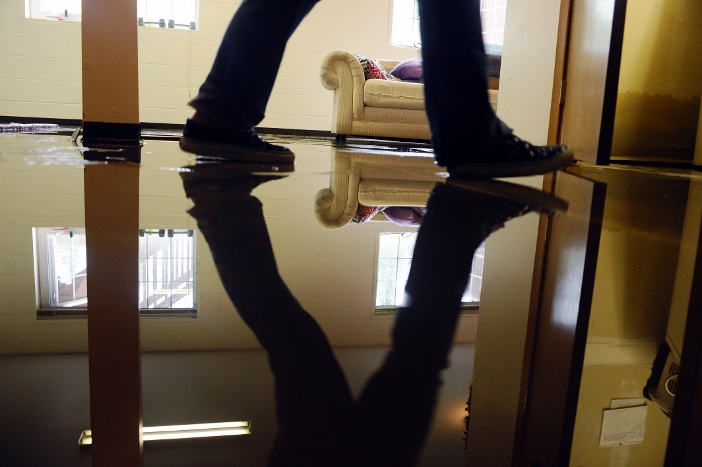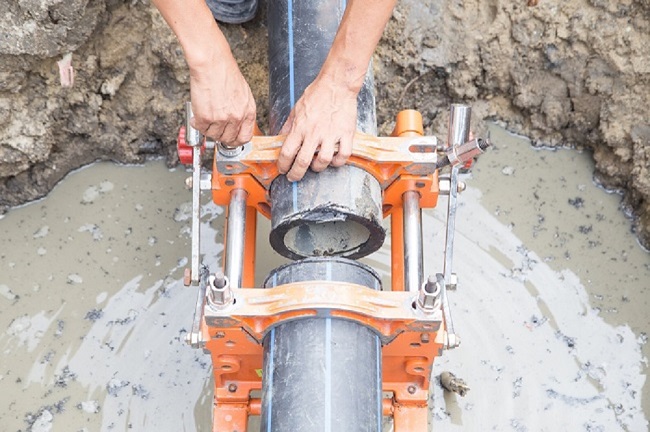We've stumbled upon this great article involving How to install a dishwasher safely listed below on the net and thought it made sense to share it with you here.

A ruptured pipe is a major emergency; you can just stand as you watch water you pay dearly to rejoin with the earth. In worse instances, you notice a swimming pool on your kitchen flooring, which is a great journey threat, especially if you have kids around. If the pipeline that ruptured was in your walls, trouble: you might need to paint that whole section.
Exactly how can a tragedy like a burst pipe be stopped as well as taken care of? Well, by listening to your expert emergency plumbing professionals and following these policies.
Just how do I know when my pipes have burst?
Changing water stress
Pipes do not just burst in a day. You may have observed that your cooking area faucet or shower does not run immediately when you turn the faucet. It may stop briefly for a couple of secs and afterwards blast you with even more pressure than common.
In various other circumstances, the water might seem normal at first, then drop in pressure after a few seconds.
Wet walls as well as water spots
Before a pipeline ruptureds, it will certainly leakage, a lot of times. If this relentless dripping goes undetected, the leakage might finish right into a large wound in your pipeline. One very easy means to prevent this emergency is to keep an eye out for damp wall surfaces advertisement water discolorations. These water discolorations will certainly lead you right to the leakage.
Puddles under pipelines and also sinks
When a pipeline ruptureds, the discharge develops a pool. It may appear that the puddle is growing in size, and no matter how many times you wipe the pool, in a couple of mins, there's one more one waiting to be cleaned up. Typically, you may not be able to trace the puddle to any noticeable pipelines. This is an indication to call an expert plumber.
Untraceable dripping noises
Pipe ruptureds can take place in one of the most unpleasant places, like within concrete, inside walls, or under sinks. When your house goes quiet, you might be able to hear an annoyingly relentless leaking noise. Even after you have actually examined your shower head as well as kitchen area tap, the trickling might proceed.
Precious reader, the trickling might be coming from a pipe inside your walls. There isn't much you can do about that, other than inform a professional plumber.
Shut off the Water
When water ices up, it broadens in volume by about 9 percent. And also it broadens with remarkable pressure: The stress inside pipes might go from 40 extra pounds per square inch to 40,000 psi! No pipe can hold that much stress, so it bursts. The break may take place where the ice types, but regularly, it happens where water pressure locates a vulnerable point in the pipe. That might be inches and even feet from the frozen location. Discover the water shutoff valve and shut off the water to prevent even more damage. You might additionally need to shut down the electrical power too, depending upon where the leakages happens and just how big it is.
Infected water
Lots of people think a burst pipeline is a one-way outlet. Fairly the contrary. As water drains of the hole or gash in your plumbing system, pollutants find their method.
Your water may be polluted from the source, so if you can, inspect if your water tank has any type of troubles. Nonetheless, if your drinking water is provided as well as detoxified by the city government, you need to call your plumber right away if you see or smell anything funny in your water.
What do I do when I detect a burst pipeline?
Your water meter will remain to run also while your water wastes. To reduce your losses, discover the major controls as well as transform the supply off. The water mains are an above-ground structure beside your residential or commercial property.
How to Fix & Detect a Leaking Pipe
How Do I Know if a Pipe is Leaking?
Leak detection tests can help you determine if your pipe has a leak. Even if you don’t see an apparent leak, you should still conduct leak detection tests regularly to save water and money—and prevent major damage to your home.
Water meter. It can be helpful to figure out what your usual water meter usage numbers are and then monitor them regularly. To monitor your meter, first, turn off all water faucets in your home. Check the meter and write down the numbers. In a few hours, check the meter again. If the numbers have changed, you have a leak. Water gauge. Use a water gauge to test your water pressure. Your showerhead should produce a certain amount of water pressure based on its model and design. If the pressure is lower than it is supposed to be for that specific showerhead, your home likely has a leak. Puddles. Look inside your bathroom, laundry, and kitchen sink cabinets. Puddles around the cabinets or around toilets, tubs, showers, and washing machines indicate the presence of a leaking pipe. You may also notice loose tiles, peeling or flaking paint, or mold caused by water accumulation. Napkin test. Even if you don’t see any puddles, you may still have a leak. You can test for water leaks in the bathroom, laundry, and kitchen by wiping below-sink connections with a napkin, paper towel, or piece of toilet paper. If it becomes damp, you probably have a leaking pipe under the sink. Discolored walls. Walls that are discolored—usually with brown or yellow stains—or bulging might mean that they have been impacted by water damage caused by a leaking pipe. Smell. A leaky pipe will create sitting water, and over time, that water may develop a musty smell. If your home smells musty, but you can’t locate the source, it may be due to a leak. Steps for Fixing a Leaking Pipe
A leaky drain can be remedied by tightening the pipe base, replacing the drain seal, caulking the rim, and tightening the pipe nut. Similarly, a leaking toilet pipe can be treated by tightening the packing nut. You may also need to replace the valve. A leaky faucet may just need tightening or replacement of the washers. If that doesn’t work, consider replacing your faucet. If your pipe has a hole in it, you may want to use a pipe leak sealer or pipe leak tape. This quick fix for water pipe leaks can also temporarily fix a copper pipe leak. https://www.ahs.com/home-matters/quick-tips/how-to-tell-if-pipes-are-leaking/

Do you appreciate reading up on What to Know Before Installing a Dishwasher? Try leaving feedback down below. We will be glad to listen to your ideas about this blog posting. We hope that you visit us again before long. Don't hesitate to take the time to promote this article if you enjoyed it. We thank you for reading our article about What to Know Before Installing a Dishwasher.
Click Here To Find Out More